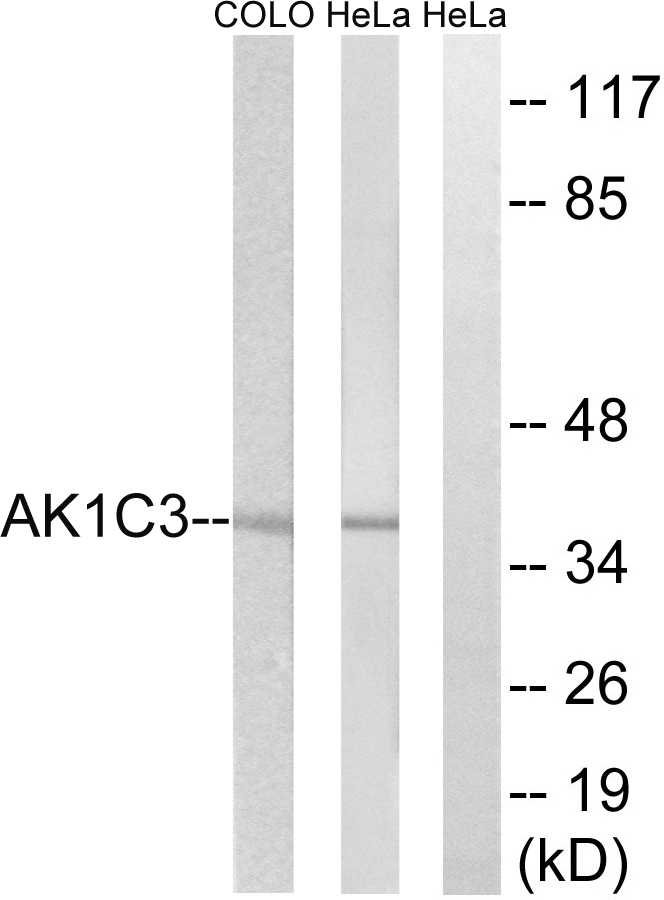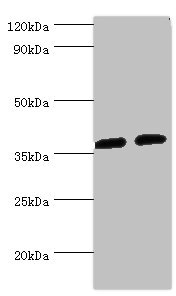AKR1C3 antibody [C2C3], C-term
GTX104627
ApplicationsImmunoFluorescence, ImmunoPrecipitation, Western Blot, ImmunoCytoChemistry, ImmunoHistoChemistry, ImmunoHistoChemistry Paraffin
Product group Antibodies
TargetAKR1C3
Overview
- SupplierGeneTex
- Product NameAKR1C3 antibody [C2C3], C-term
- Delivery Days Customer9
- Application Supplier NoteWB: 1:5000-1:20000. ICC/IF: 1:100-1:1000. IHC-P: 1:100-1:1000. IP: 1:100-1:500. *Optimal dilutions/concentrations should be determined by the researcher.Not tested in other applications.
- ApplicationsImmunoFluorescence, ImmunoPrecipitation, Western Blot, ImmunoCytoChemistry, ImmunoHistoChemistry, ImmunoHistoChemistry Paraffin
- CertificationResearch Use Only
- ClonalityPolyclonal
- Concentration1 mg/ml
- ConjugateUnconjugated
- Gene ID8644
- Target nameAKR1C3
- Target descriptionaldo-keto reductase family 1 member C3
- Target synonyms3-alpha hydroxysteroid dehydrogenase, type II; 3-alpha-HSD type II, brain; aldo-keto reductase family 1 member C3; chlordecone reductase homolog HAKRb; DD3; DDX; dihydrodiol dehydrogenase 3; dihydrodiol dehydrogenase X; HA1753; HAKRB; HAKRe; hluPGFS; HSD17B5; indanol dehydrogenase; PGFS; prostaglandin F synthase; testosterone 17-beta-dehydrogenase 5; trans-1,2-dihydrobenzene-1,2-diol dehydrogenase; type IIb 3-alpha hydroxysteroid dehydrogenase
- HostRabbit
- IsotypeIgG
- Protein IDP42330
- Protein NameAldo-keto reductase family 1 member C3
- Scientific DescriptionThis gene encodes a member of the aldo/keto reductase superfamily, which consists of more than 40 known enzymes and proteins. These enzymes catalyze the conversion of aldehydes and ketones to their corresponding alcohols by utilizing NADH and/or NADPH as cofactors. The enzymes display overlapping but distinct substrate specificity. This enzyme catalyzes the reduction of prostaglandin (PG) D2, PGH2 and phenanthrenequinone (PQ), and the oxidation of 9alpha,11beta-PGF2 to PGD2. It may play an important role in the pathogenesis of allergic diseases such as asthma, and may also have a role in controlling cell growth and/or differentiation. This gene shares high sequence identity with three other gene members and is clustered with those three genes at chromosome 10p15-p14. [provided by RefSeq]
- Storage Instruction-20°C or -80°C,2°C to 8°C
- UNSPSC12352203






